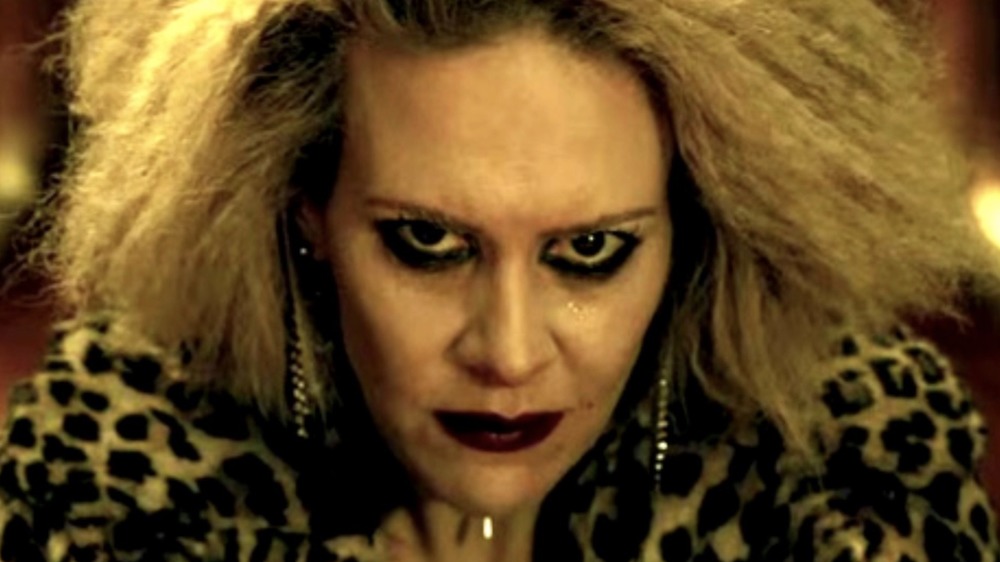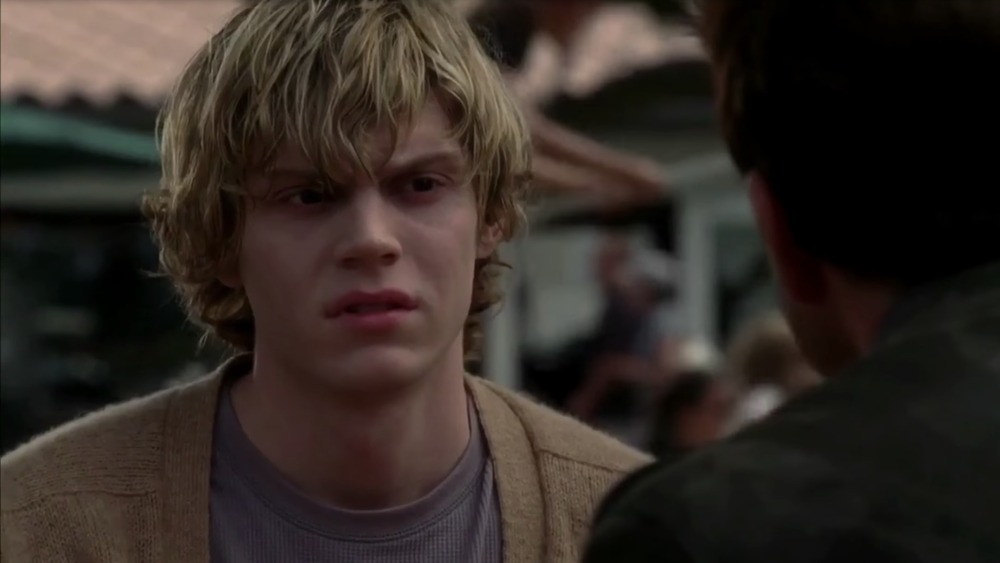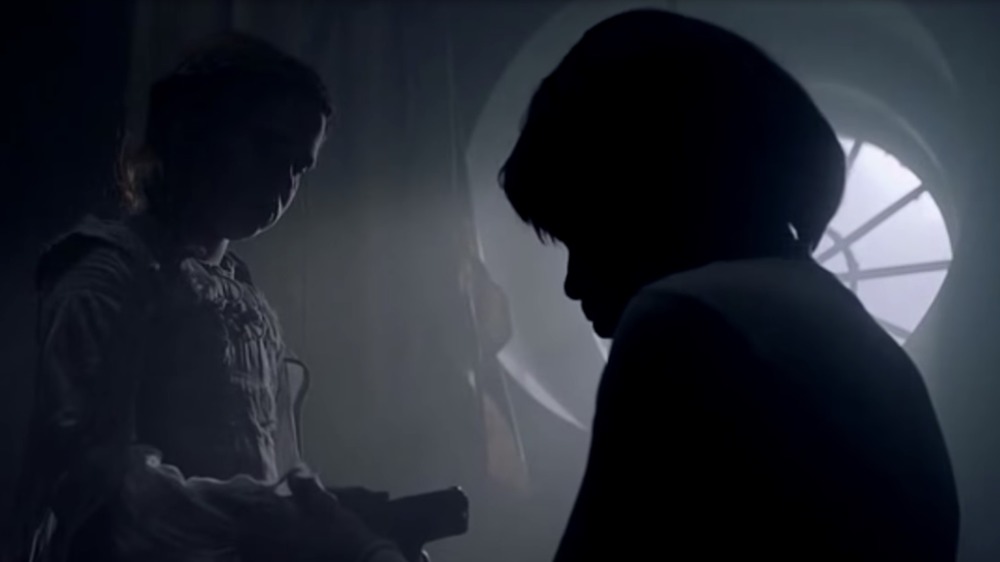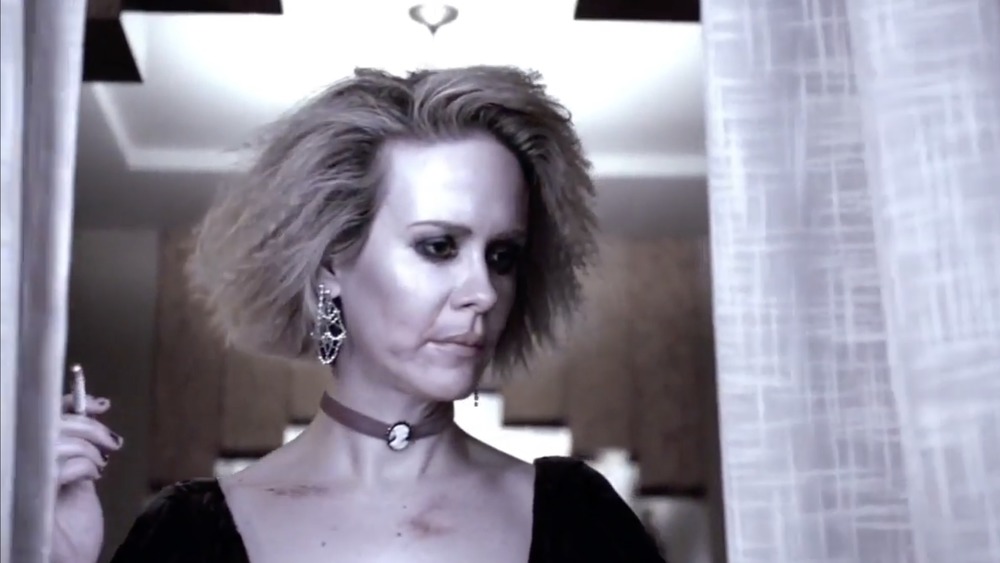What Doesn't Make Sense About The Ghosts In American Horror Story
Over the course of nine seasons, American Horror Story has seen its share of ghosts. These ghosts have rules to adhere to, and they generally seem to stick to those rules, although they haven't always. On occasion, they've changed their behavior based on the requirements of the plot. In that way, the behavior of the series' ghosts has evolved and changed, but sometimes how that's happened has required more suspension of disbelief from the show's fans than they normally have to apply.
In general, these changes have all been done in the name of making sure the show's ghosts remain surprising and inventively terrifying, and that's how it should be. How boring would it be if the ghosts did the same thing year after year? One thing American Horror Story isn't is boring, so it's good to embrace the ghostly plot twists and focus on your visceral reactions to the mayhem in this dark and brutal on-screen world. Here are some of the ghost moments that seemed inconsistent on past storylines of American Horror Story.
Tate on Murder House flaunted the rules early on
The iconic Rubber Man suit has appeared on American Horror Story in multiple seasons. First seen in American Horror Story: Murder House, the suit was revealed to be hiding Tate Langdon (Evan Peters). Inside the suit, he raped Vivien Harmon (Connie Britton), impregnating her with Michael Langdon (Cody Fern). His identity as Michael's father was one of the big reveals of that season, in the eighth episode called "Rubber Man."
That episode reveals early on that the suit was first purchased by Chad (Zachary Quinto) to spice up his relationship with Patrick (Teddy Sears) and was thrown away by Ben (Dylan McDermott). At this early juncture in the show, it was already established that ghosts could not leave the house — yet Tate retrieved the suit from outside, where the trash was located.
However, it's apparently since been clarified that ghosts can actually leave the house, just not the property – except on Halloween. Whether or not they can actually interact with objects while outside the house is a bit more iffy. In any case, it's clear that Tate must have bent or broken at least one of these rules somehow, the way the audience understood it at the time, as a device to further the plot. And this took place not long after the ghosts' limitations were made clear to audiences.
All of a sudden, ghosts can kill during the Blood Moon
In American Horror Story: Roanoke, writers once again threw the rulebook out in order to allow ghosts to take on human form during "The Blood Moon." And not only are they able to become corporeal again, but they can actually kill humans during this time.
As Elias Cunningham (Ric Sarabia) elaborates in the fourth episode of the sixth season, "Every death, every missing person, takes place during the same lunar cycle in October. The Native Americans called it the Dying Grass Moon. It's six days, six blood-drenched days, from the first quarter moon to the Blood Moon. Now, the spirits can haunt you at any time, they can show themselves or not. But during this period, this is when they can kill."
You could argue that the rule about ghosts being able to wander about on Halloween coincides with the Blood Moon, if you wanted to justify the change the writers made here. However you look at it, though, this was an alteration to what viewers knew of the world inside the show.
It also brings up another question. In astronomy, a Blood Moon can refer to two different things. Firstly, it is the recently coined name of a total lunar eclipse, during which the Moon takes on a reddish appearance as a result of dispersed light from Earth's sunrises and sunsets. Secondly, it is an alternate name for the full moon (the Hunter's Moon) that falls nearest the autumnal equinox each year — which means it comes in September or October. The second instance is clearly the one referred to in the show, but how does a total lunar eclipse affect the ghosts?
Who becomes a ghost? It's not completely clear
Ghosts appear on all but a few seasons of American Horror Story and are especially prevalent in the first season, Murder House, and the fifth season, Hotel. According to the story established in those seasons, anyone who dies on the grounds gets trapped there for eternity.
But not everyone becomes a ghost. There are plenty of people who die in the Hotel Cortez that don't appear to become ghosts, unless they just aren't seen.
It isn't completely clear who gets to return as a ghost, although the show has implied that ghosts have a purpose in staying behind. In the episode "Mommy," during the fifth season, Sally (Sarah Paulson) is helping Iris (Kathy Bates) overdose and asks if Iris plans to come back for "unfinished business." This seems to indicate that the ghosts who return are here for a specific reason, but their motives haven't necessarily been revealed.
Generally, a good rule of thumb to go by when it comes to the whys and whos of American Horror Story ghosts is that the rules are what the writers say they are, even if that means they differ from season to season. Still, over the course of ten years, the series has been able to stay pretty consistent. Another thing that stays consistent: the fact that fans have many questions about how ghosts work. Perhaps future seasons will make things more clear, or perhaps they'll just muddy the waters a bit more in the name of a good story.



